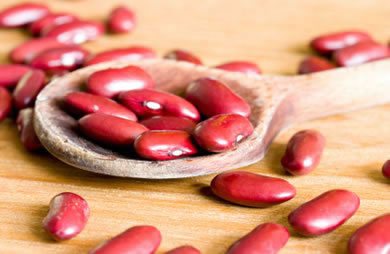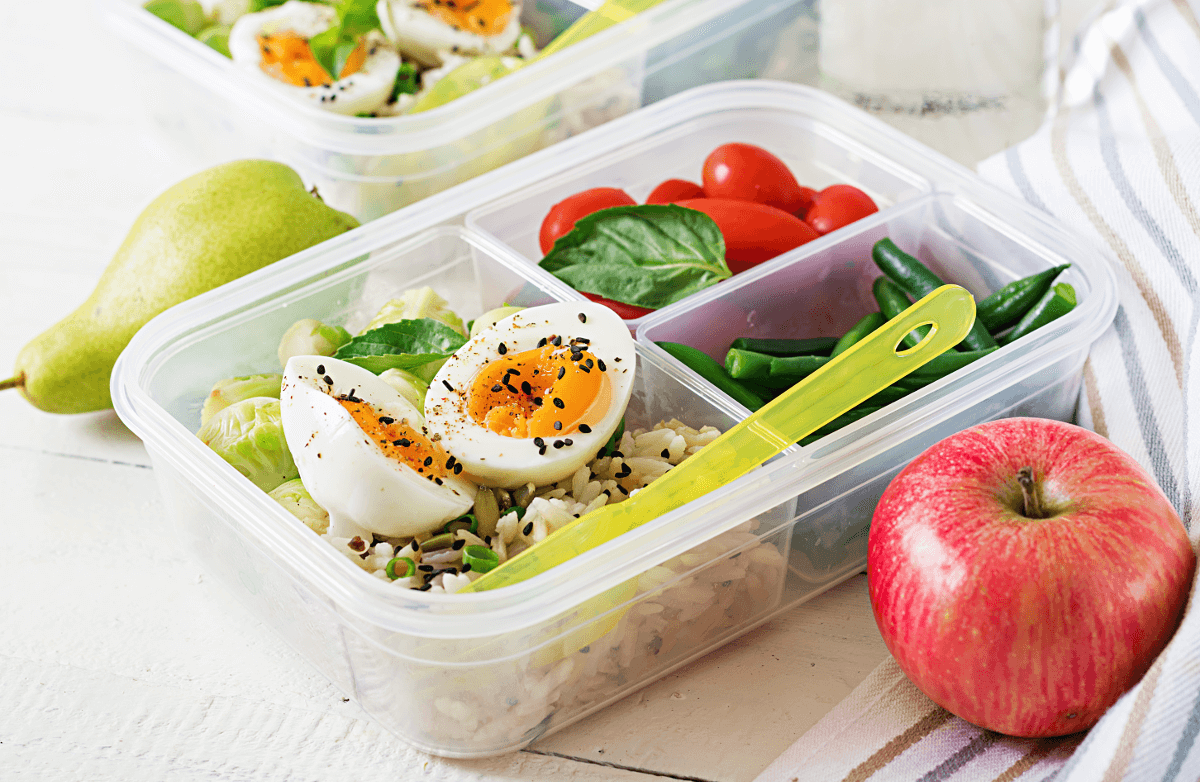The mere thought of "going on a diet" implies a starting and an ending point. No matter your motivation level, upon thinking the word "diet," your brain instinctively begins to think about how difficult the journey will be and how deprived you will feel. Severe caloric restriction may lead to increased feelings of hunger. Eliminating certain food groups will often lead to craving those foods even more so than you did in the past.
Unless you have a medical reason to do so, or a metabolic disorder that requires you to follow a very specific diet, a rigid plan will probably not get you where you want to be. Losing weight is so much more than just choosing a diet plan and following it. Most everything we do is a result of habit, including our approach to eating and food, and habits, as we know, are hard to change. Most diets include lists of what is acceptable and what is not acceptable, which forces people to change many habits all at the same time. It's overwhelming, tiresome and requires enormous discipline.
We are often unaware of how situations like diets set us up for failure. So much of how and what we eat is a result of conditioning, outside cues and old habits. Scientific evidence shows that when we heighten our awareness, create an environment conducive to a healthy body weight and practice healthy lifestyle habits, the excess pounds begin to come off.
Brian Wansink, Director of the Cornell University Food and Brand Lab; Dr. Barbara Rolls, author of "The Volumetrics Weight-Control Plan"; and many other researchers, including myself, have devoted their careers to studying the effects of emotional, social and environmental cues on our food choices. The evidence shows that the road to a healthy body weight is not by dieting.
Perhaps it is time for a gentler, more compassionate approach. Rather than changing everything at once, what if you worked on tweaking one small habit at a time? Consider the benefits of putting your full focus on just one thing, practicing it over and over again, until it feels easier, more natural and eventually becomes the inherent way that you approach food and eating. Foster habits that are healthier and, over time, you are more likely to lose weight and keep it off for good.
Keep in mind that this is not a quick fix approach. It will require patience, but it will feel so much easier than measuring every little bit of food you eat, counting calories or having lists of what is okay to eat and what is not allowed. It is an approach that will allow you to live in the real world, socialize with your friends, travel and eat out in restaurants while still losing weight. When these habits are adopted and become the way you naturally eat, success is sure to follow.
Getting started is as simple as beginning to apply healthy habits to your life, one day and one tip at a time, until they become part of your lifestyle. Start the 52 tips outlined below, in whatever order you choose. Start with whichever one appeals to you first, practice it for a week or until it feels like a habit, then move on to the next. One year from today, you may just find that you have lost the excess weight, kept it off and didn’t have to go on a diet to do so.
Ready to get on the path to a healthier you?
1. Eat often and eat light. Never go more than four hours without a meal or snack.
2. Eat within one hour of waking.
3. Eat the last meal of the day at least three hours before bedtime.
4. Combine protein, complex carbohydrates and a small amount of healthy fats at every meal and snack.
5. Always have healthy, portable snacks accessible when away from home for long stretches of time.
6. Pre-plan meals and snacks into your day every morning when reviewing your schedule.
7. Rate your hunger from 1-5. 1=ravenous, 2=very hungry, 3=hungry, 4=satisfied, 5=stuffed. Aim to eat as soon as you hit a three and stop when you are at a four.
8. Eat slowly and mindfully, and stop when satiated, not stuffed.
9. Taste a small amount of desserts and treats, savor, enjoy and put the fork down.
10. Eat foods high in fiber every day.
11. Eat at least five servings of fruits and/or vegetables daily.
12. Be mindful. Check in with yourself before making food choices and ask yourself if you are physically hungry or if you are eating for another reason such as boredom or procrastination. If the answer is not physical hunger, walk away and find something else to do.
13. Eat a large bowl of salad or a non-cream-based soup before lunch or dinner. You will fill up and eat fewer calories from your entrée.
14. Avoid buffets. They are an invitation to overeat!
15. As soon as you recognize the physical signs of hunger (growling stomach, slight lightheadedness, focus and energy draining), stop and eat a nourishing snack or, if it’s the appropriate time, a meal. Hunger is the enemy of progress, leading to poor choices and over indulging.
16. Don’t head to the supermarket hungry. Eat a healthy meal or snack before heading out to buy groceries.
17. Read food labels and compare products. Use the free app, Fooducate, to easily compare products and then choose the one with the better rating.
18. Avoid buying trigger foods that you know cause you to lose control and overeat.
19. Drink an eight-ounce glass of water before every meal.
20. Drink lots of clear liquids all day, primarily water, seltzer or tea.
21. Weigh in at least once a week. Ignorance is not bliss when it comes to weight loss.
22. Have a five-pound acceptable weight range in mind. Swing into action immediately when the scale tips beyond your top acceptable number.
23. Strength train at least twice a week for a minimum of 20 minutes.
24. Do aerobic exercise at least five times a week. Thirty minutes is ideal, but not required every day.
25. Do short workouts when you can’t fit in an entire one. A little is always better than nothing.
26. Schedule exercise into your calendar in advance and treat it like a business appointment. Non-negotiable!
27. Join a group exercise class that is fun and that you will look forward to attending. If it’s enjoyable and already paid for, there is a good chance you’ll go.
28. Recruit a friend to be your exercise buddy. Commitment to exercise increases when you partner up.
29. Combine exercise with another activity you enjoy, such as listening to music, reading, watching TV or walking with the dog.
30. Increase daily movement wherever possible—climb stairs, park farther away, get off buses or trains one stop early, take walking breaks from work.
31. Wear a pedometer every day. Aim to increase your steps by 1,000 per day, per week, until you reach 10,000 a day.
32. Check the serving size on snacks and foods. Measure out that amount to keep portion size appropriate.
33. Use measuring cups as serving utensils.
34. Don’t serve family-style meals, except for salad, veggies or fruit desserts.
35. Get seven to eight hours of sleep most nights of the week.
36. Wear form-fitting clothing. Not only will you look better than in baggy clothes, but you will also know as soon as you are putting on weight.
37. Cook healthy foods in advance and freeze in individual containers.
38. Avoid multi-tasking while eating. That means no eating in front of the TV or computer or while talking on the phone.
39. When socializing, focus on the people, not the food.
40. Paint your kitchen and dining room, and buy plates and utensils in soft hues such as blue, green or grey. Bright colors stimulate the appetite, while soft ones suppress it.
41. Keep the kitchen the place for food prep and eating only. Don’t pay bills, talk on the phone or do work in the kitchen.
42. Use eight-inch, rather than 10-inch, dinner plates.
43. Keep healthy foods such as fruits and veggies in clear containers and bowls at eye level in the fridge and on counters. When you see it, you’re more tempted to eat it.
44. Keep treats and temptations in opaque containers, in the back of the fridge or cabinets, or in the freezer. Out of sight, out of mind.
45. Use positive self-talk, mantras and visual reminders of your goals and vision. One example that many love is, "Nothing tastes as good as having a lean, strong body!"
46. Ask for the support and encouragement from those you trust. Tell them exactly how they can help.
47. Mint is an appetite suppressant. Burn mint-scented candles in the kitchen and dining room.
48. Brush and floss your teeth after dinner. Use mint-flavored toothpaste and dental floss.
49. Chew sugarless, mint-flavored gum between meals to squash cravings.
50. Sip on water flavored with mint throughout the day.
51. Take a yoga or meditation class. Research has shown that both practices increase mindfulness around food choices and improve body image.
52. Respect your intuition and listen to your body. You know what ultimately makes you feel great or feel lousy. Do more of the great and a lot less of the stuff that makes you feel lousy!
If you would like more detailed information about each of these tips, you can download the entire list and special report. You will then receive one brief audio file each week, delivered to your inbox, explaining the science behind each tip.
52 Ways to Ditch Your Diet for Good
Related Articles
-
 Beans: The Super Food that Keeps You Full
Beans: The Super Food that Keeps You Full
-
 How to Eat 5 Fruits & Veggies Each Day
How to Eat 5 Fruits & Veggies Each Day
-
 13 Weight-Loss Rules You'll Love to Follow
13 Weight-Loss Rules You'll Love to Follow
-
 A Quick Beginner's Guide to Exercise Hydration
A Quick Beginner's Guide to Exercise Hydration
-
 How to Get Your Daily Dose of Vitamin D
How to Get Your Daily Dose of Vitamin D
-
 How to Make Your Next Work Meeting Healthy
How to Make Your Next Work Meeting Healthy
-
 Yes, Pizza Can Be a Part of Your Healthy Diet
Yes, Pizza Can Be a Part of Your Healthy Diet
-
 9 Meal Makeovers that Will Please Parents and Kids
9 Meal Makeovers that Will Please Parents and Kids
-
 Easiest Vegetables to Grow
Easiest Vegetables to Grow
-
 7 Meal Prep Shortcuts That Will Save You So Much Time
7 Meal Prep Shortcuts That Will Save You So Much Time



